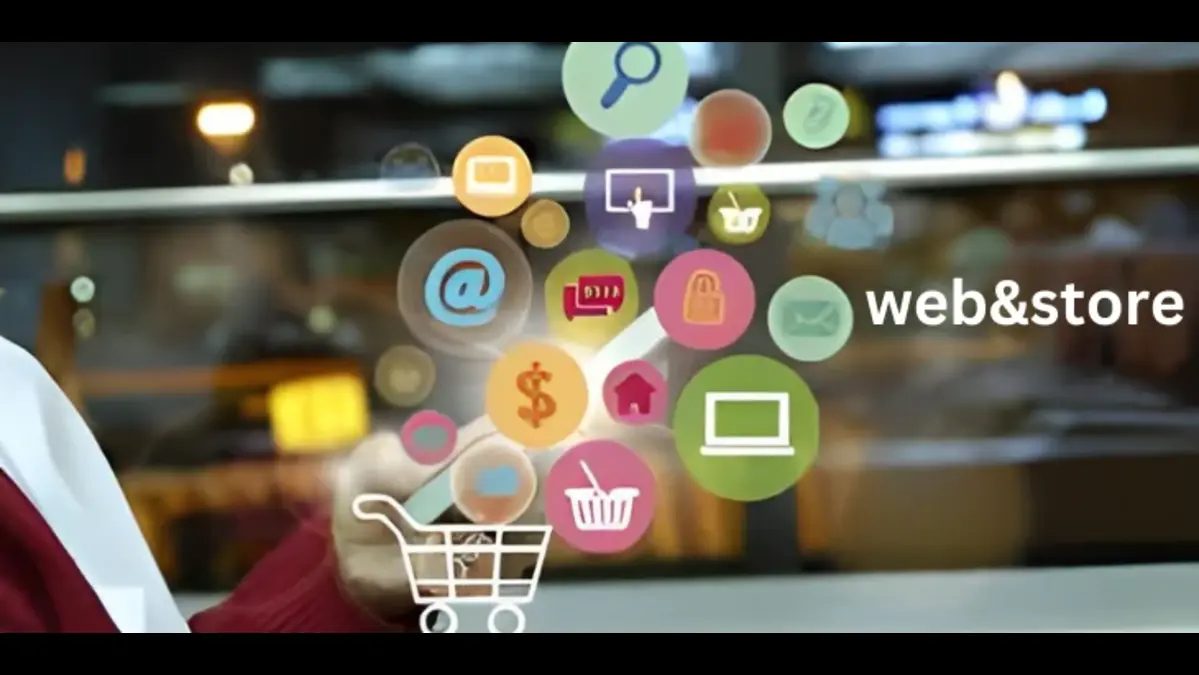Introduction to web&store Platforms
In today’s digital landscape, the way consumers shop has transformed dramatically. With the rise of e-commerce and brick-and-mortar stores coexisting, businesses are on a quest for seamless integration between their web&store platforms. This convergence offers a unique opportunity to enhance customer experiences, streamline operations, and boost sales. Imagine walking into a store where your online shopping history influences personalized recommendations or checking out online only to pick up your purchase in-store moments later. The fusion of web and store platforms is not just a trend; it’s becoming essential for modern retailers aiming to thrive in an increasingly competitive market.
As we delve deeper into this topic, we’ll explore the advantages of integrating these two worlds, tackle common challenges faced during integration efforts, and provide actionable tips that can lead to successful outcomes. Additionally, real-world case studies will illuminate companies that have effectively embraced this approach. Buckle up as we navigate future trends shaping integrated platforms—this journey promises insights you won’t want to miss!
Advantages of Integrating web&store Platforms
Integrating web&store platforms brings many benefits that can elevate a business’s performance. One key advantage is streamlined operations. By merging online and in-store processes, businesses reduce redundancy and enhance efficiency.
Another significant benefit is improved customer experience. Shoppers enjoy a unified interface, allowing them to browse products seamlessly across channels without feeling disconnected from the brand.
Data synchronization also plays a crucial role. With integrated systems, retailers access real-time inventory information, which minimizes stock discrepancies and optimizes supply chain management.
Additionally, businesses gain valuable insights into customer behaviour by analyzing data from both platforms. This helps tailor marketing strategies and improve engagement efforts effectively.
Cost savings become apparent as integration often reduces overhead expenses through consolidated resources and fewer operational hiccups.
Common Challenges with Integration
Integrating web&store platforms can feel like navigating a maze. One of the most significant challenges is data synchronization. Ensuring that information flows seamlessly between online and offline systems requires meticulous planning.
Another hurdle is differing technology stacks. Each platform may rely on unique software, which complicates the integration process. This disparity can lead to increased costs and extended timelines.
User experience also poses a challenge. If not executed carefully, integration might confuse customers with inconsistent channel interfaces and functionalities.
Furthermore, security concerns are paramount when merging systems. Protecting sensitive customer data must be prioritized throughout the integration journey.
Staff training must be noticed; employees must adapt to new workflows to effectively leverage integrated solutions. Balancing all these elements is crucial for achieving a seamless connection between web and web&store environments.
Tips for a Successful Integration
Start by understanding your business needs. Identify the specific features that will enhance customer experience and streamline operations.
Next, choose the right tools. Opt for platforms that offer seamless compatibility with existing systems. This will save time and reduce headaches during implementation.
Prioritize user training and ensure your team is well-equipped to navigate the integrated system. Knowledgeable staff can make a significant difference in effectively leveraging new capabilities.
Data consistency is crucial. web&store Regularly sync databases to maintain accurate information across all channels. This minimizes discrepancies and fosters trust among customers.
Gather feedback continuously. Encourage users to share their experiences with the integration process. Their insights can guide future improvements and help fine-tune performance over time.
Case Studies: Companies that successfully integrated web&store platforms
Nike is a standout example of effective web and store platform integration. They transformed their shopping experience by linking online purchases with in-store pickups. Customers can order shoes through the website and collect them at their nearest outlet, creating convenience and enhancing customer satisfaction.
Another notable case is Starbucks. Their mobile app seamlessly integrates ordering and payment processes with physical store experiences. Users can customize drinks, pay ahead, and earn rewards from their smartphones. This strategy has significantly boosted customer loyalty.
Target also shines in this arena, merging e-commerce with brick-and-mortar stores effectively. Their “Buy Online, Pick Up In Store” feature allows customers to shop conveniently online while enjoying the immediate gratification of picking up items locally.
These companies exemplify how integrating web&store platforms improves operational efficiency and enriches user experiences across multiple channels.
Future Trends and Predictions for Integrated Platforms
The future of integrated web and store platforms is poised for exciting transformations. As technology advances, we can expect more personalized shopping experiences driven by artificial intelligence. This means tailored recommendations and more thoughtful customer interactions.
Mobile commerce will also take centre stage. With an increasing number of smartphone consumers, seamless integration between online and offline channels will become essential.
Augmented reality could redefine how users interact with products before purchasing. Imagine virtually trying on clothes or visualising home furniture through a simple app.
Data analytics will also play a crucial role. Businesses leveraging user behaviour insightsr can optimize their strategies for better engagement and retention.
Sustainability may shape the development of these platforms. Consumers are becoming increasingly conscious of eco-friendly practices, pushing brands to integrate responsible solutions into their operations.
Conclusion
Integrating web&store platforms is not just a trend; it’s becoming essential for businesses aiming to thrive in today’s digital landscape. Companies that successfully merge their online and offline operations create a more seamless customer experience, ultimately driving sales and fostering loyalty.
As technology evolves, the capabilities of these integrated platforms will continue to expand. Businesses that stay ahead of these changes will be better positioned to adapt swiftly, ensuring they remain competitive in an ever-changing market.
Investing time and resources into effectively merging web store functionalities can yield substantial returns. Embracing this integration reflects a commitment to customer satisfaction and operational efficiency—two critical components for success in any industry. The journey may have its hurdles, but the rewards are well worth the effort, paving the way toward innovative solutions that cater directly to consumer needs now and into the future.
you may also read
Dallas Mavericks vs Clippers match player stats
